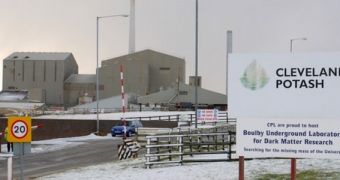An international team of researchers in Europe will descend into the 1,400-meter (4,600-foot) Boulby Mine later this week, in an effort to study a host of technologies that might improve our ability to detect potential extraterrestrial life on other planets, including Mars. Additional technologies to explore the surface of the Red Planet will be tested as well.
The 200-hectare (490-acre) site, located on the northeast coast of the North York Moors, in England, houses a mine that produces half of the annual amount of potash consumed in the country. It is the second-deepest mine of any type in Europe and also the site of the ZEPLIN-III (WIMP Searches with Two-Phase Xenon) dark matter detector.
This device is situated around 1,100 meters (3,610 feet) below the surface, in the Boulby Underground Laboratory, an installation that is also home to the UK Dark Matter Collaboration and the Directional Recoil Identification From Tracks (DRIFT) dark matter detector. This location represents the perfect spot to test out new technologies for digging up clues of past life on Mars.
This research expedition is part of the Mars Analogues for Space Exploration (MASE) program, whose goal is to determine how life forms would adapt to living under conditions such as those on the Red Planet. The Boulby Mine provides the perfect place to study and understand deep, subsurface life.
Another objective the research team is interested in is enabling the efficient transfer of technologies from the space exploration industry to the mining industry, improving safety, mineral extraction efficiency, and additional benefits. Unlike other locations, this mine features a series of unique organisms that are of great interest for the MASE initiative, PhysOrg reports.
“If we want to successfully explore Mars, we need to go to Mars-like places on Earth. The deep, dark environment of Boulby mine is the ideal place to understand underground life and test space technologies for the exploration of Mars,” explains investigator Charles Cockell.
“In the process, we hope to aid the transfer of high technology from space exploration to safe, effective mining,” adds the expert, who holds an appointment as the director of the UK Center for Astrobiology. The expert is also a professor and the scientific coordinator for the entire MASE program.
Over the past few years, discoveries from rovers including Mars Exploration Rover's (MER) Opportunity and Mars Science Laboratory's (MSL) Curiosity – both owned and operated by NASA – have painted an image of an ancient Mars where microbial life was possible. What experts need to do now is actually find traces of such organisms, if they indeed ever existed.

 14 DAY TRIAL //
14 DAY TRIAL //